When asked to think about how horses and humans communicate with each other, most people would likely conjure up the classic image of a rider on horseback, steering with reins and giving a kick to signal “Go!”.
In this picture, the human is the communicator, the horse the receiver. The animal is expected to obey the commands given, but not do much else. However, horses aren’t passive creatures built for one-way communication with humans. In fact, they have their own motivations, desires, and emotions, which they can attempt to communicate to the humans they interact with.
There’s a wealth of recent research that has shed new light on horses’ abilities to understand and communicate with human caretakers. This article examines the current scientific understanding of the various ways horses communicate with the humans around them.
Facial Expressions
Humans began domesticating horses sometime between 4,000 and 3,000 BCE. Amy V. Smith, a researcher of horse communication and cognition, suggests that the natural social behaviors of horses could have primed them for domestication: “Horses are highly social herd animals by nature – they’re well evolved for herd life and are excellent communicators with other horses (i.e. they recognise one another’s facial expressions, body language, and a variety of contact calls). This sociality may have facilitated their domestication, helping them cross the species barrier to understand human cues.”
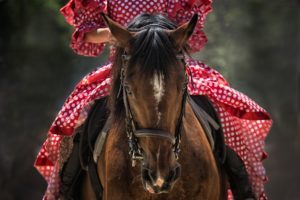 Once horses entered domestication, the close and constant interaction with humans could have sparked the development of greater interspecies communication abilities. This includes their ability to assess human facial expressions, something which Smith has studied closely.
Once horses entered domestication, the close and constant interaction with humans could have sparked the development of greater interspecies communication abilities. This includes their ability to assess human facial expressions, something which Smith has studied closely.
In recent experiments,1 Smith and her team showed 28 domestic horses large photos of human faces. The faces shown had varying expressions, displaying emotions like happiness or anger.
Smith found that the photos of angry faces triggered negative responses in the horses. Their heart rates increased significantly, and they stared at the photo with their left eye. In mammalian brains, what’s seen by the left eye is processed in the right brain hemisphere, which is specialized to process negative stimuli.
Because of the placement of horses’ eyes, they cannot view what’s directly in front of them. They must shift their head to the side to get a good view of something straight ahead. The fact that the horses would consistently shift their heads so that they could view the angry photos with their left eye strongly indicates that they have negative associations with the images.
It could be both the domestication process, as well as the personal experiences of individual horses that has influenced the way horses recognize and respond to human communication signals.
“The domestication process itself may have played a significant role, despite being relatively short (6,000 years ago, compared to cats’ 9,500 and dogs’ 15-30,000 years). Horses may also acquire human communication skills during their individual lifetimes, as they gain experience with humans and learn to associate certain signals (such as attention, emotion, and intentional gestures) with certain positive or negative outcomes.”
– Amy V. Smith.
D omestic dogs are also adept at recognizing human emotions,2 and too have negative responses to angry faces. They react by showing avoidant behavior. This increased sensitivity in two domestic species could be an indication that living closely with humans can help animals become more attuned to human emotions, gestures, and other communicative displays.
omestic dogs are also adept at recognizing human emotions,2 and too have negative responses to angry faces. They react by showing avoidant behavior. This increased sensitivity in two domestic species could be an indication that living closely with humans can help animals become more attuned to human emotions, gestures, and other communicative displays.
What’s interesting to note is that horses have facial expressions similar to those of humans, as well as some other animal species.3
Despite the differences in anatomy, researchers found that there were striking similarities in the movements of the eyes and lips. The leaders of this study believe that their findings contribute to the growing evidence that the evolution of facial expressions has been strongly influenced by social interaction.
Vocal Communication
Scientists have found that horses also convey their emotions through through their vocal communication (whinnying and neighing).4 Now, most equestrians might sigh “I could have told you that!”, but research has uncovered that the noises horses make are often packed with incredibly detailed information.
The frequencies and lengths of horse whinnies change depending on whether a horse is having a positive or negative emotion, and just how intense their feelings are at that moment. This was discovered in experiments when horse companions would be separated, and later reunited. Horse calls were also found to contain information about the individual horse’s size, sex, and identity.5
The scientists who conducted these studies plan to further investigate the nature of horse vocal communication, including whether or not the calls of domestic horses differ from those of wild horses. If there’s a difference between wild and domestic horse calls, it could be that human interaction has influenced the way they vocalize, or, at the very least, living in human-constructed conditions has.
Given that it’s now well established that vocalizing is a rich communication method for horses, humans that interact with them could benefit from better understanding what they are trying to “say” with each call.
Physical Communication
Physical communication is the primary way that humans communicate with horses. Whether by pulling on bridle reins or squeezing their legs against a horse’s sides, humans have built the entire equestrian sport around physical communication by humans. But in most common riding and handling methods, this physical communication is rigid, and usually doesn’t permit horses to have any physical response other than submission. This inhibition of behavior can have a negative effect on horses.
“What most people do with horses is consider them ‘horses’ and not single, distinct individuals. They apply a ‘method’, therefore they standardize their communication and do not listen to the single individual, do not know what is important for him or her.
In summary, they do not let that horse BE. In such a contest, a horse becomes passive because every effort to be itself, to try new strategies, to be creative, is punished because it goes outside the ‘method’ and most people do not know how to deal with it.”
– Rachele Malavasi, School of Ethical Equitation
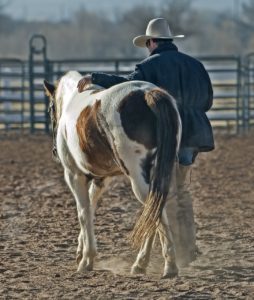 This negative effect can be compounded by the way domestic horses are housed (commonly in stalls or paddocks): “Of course, if the horse lives in a box, all its efforts will be directed to satisfy those needs that are not satisfied in their everyday life: freedom of movement and social contact, first of all.
This negative effect can be compounded by the way domestic horses are housed (commonly in stalls or paddocks): “Of course, if the horse lives in a box, all its efforts will be directed to satisfy those needs that are not satisfied in their everyday life: freedom of movement and social contact, first of all.
“Most people are scared by the strength of horses and opt for controlling them, whereas they do nothing but increase the horse’s need to escape from that condition.” said Malavasi.
“Others fear that being in contact with other horses will procure injuries, so they keep their horses in isolation. Obviously the horse, when out of its isolated box, will seek other horses and not the rider. Some horses are so deprived that they lack the basic skills to relate with other horses, and do not even search for them anymore. But they can learn, and are willing to, if given the chance.”
The recent research of Malavasi and her colleagues has focused on the way that horses try to physically communicate with humans.6 In the experiments, two treat-filled buckets were placed where a horse could see them, but couldn’t reach them. A human handler would stand near the horse, also able to see the buckets. The handler simply stood and waited.
If the horse wanted to access the treats, they’d have to figure out some way to communicate their intent to the handler.
When faced with this problem, the tested horses would use a variety of physical communication methods in an attempt to get the handler to provide access to the buckets. They would gaze back and forth between the handler and the buckets. They’d nod their heads, even sometimes quickly jerking their heads toward the buckets in what Malavasi described as a gesture similar to pointing. If one method didn’t work, they’d try another.
The horses would also make sure that they had the handler’s attention before making their communication attempts. The handlers would shift the directions their bodies were facing. The horses would look toward the handler to see if they had eye contact. If not, the horses would often approach the handlers and touch them.
“Our study demonstrated that horses can not only read us, but can adopt strategies to convey our attention and actions to the desired outcome.”- Rachele Malavasi
The horses tested in the experiment are those living at the School of Ethical Equitation. Here, they adopt an approach based on cognitive learning rather than conditioning. This means they do not teach horses fixed behavioral modules (rigid ways of responding). Each horse is stimulated be creative and find the solution to a specific request by working together with a human. The goal is for the human interaction to be stimulating, not controlling.
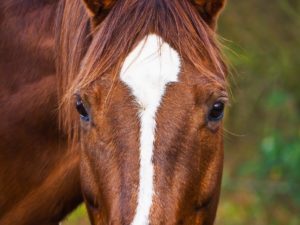 In this setting, horses can exhibit exploratory behavior without fearing punishment. Because the horses here have more behavioral freedom, their performances in the experiments may differ considerably from those of horses living in a standard equestrian setting.
In this setting, horses can exhibit exploratory behavior without fearing punishment. Because the horses here have more behavioral freedom, their performances in the experiments may differ considerably from those of horses living in a standard equestrian setting.
“The next step will be that of repeating the study in a traditional equestrian center, where we expect to find opposite results.”
Malavasi contends that many horses in traditional equestrian settings may have given up attempts at communicating with humans because their attempts are often not recognized or responded to.
Interpreting Human Body Language
Horses aren’t only capable of gesturing themselves, they can also understand human gestures (without training).7 In other studies,8,9,10 scientists tested how well horses could find food rewards that were hidden beneath buckets/bowls, with and without observing human gestures. The horses could remember where they had seen humans hide carrots before, and could also infer that a human standing next to a bucket might be a strong indication that a carrot was hidden there.
Furthermore, horses could usually understand that a human pointing to a bucket was also a reliable signal, but horses seem only to understand pointing when the human is close to the reward’s location.
Overall, horses have been found to be very sensitive to the body signals of humans. Adult horses notice and react to differences in human body orientation, head orientation, and opening or closing of the eyes.11 Horses are more likely to approach humans that seem to be paying more attention to them (facing and looking at them). If humans seem not to be paying attention to them, horses tend to walk into their field of view and try to establish eye contact.
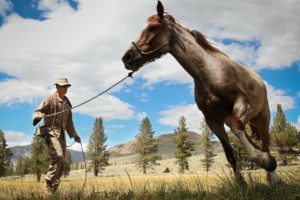 Young horses aren’t so good at picking up on the more subtle cues, instead responding only to body orientation most of the time.12 This suggests that horses get better at reading human body language as the age, and thus have gained more experience interacting with humans.
Young horses aren’t so good at picking up on the more subtle cues, instead responding only to body orientation most of the time.12 This suggests that horses get better at reading human body language as the age, and thus have gained more experience interacting with humans.
The general experiences horses have with humans can have a profound influence on the way horses view humans throughout their lives. In 2010, it was found that horses remember when they’ve had positive interactions with a human.13
After several months of separation, tested horses gravitated strongly toward kind trainers whom they were reunited with. Additionally, after the initial interactions with the kind trainers, the horses were typically more accepting of new humans.
This indicates that their previous positive experiences with humans was a determining factor in their receptiveness toward other people. They seemed to have developed positive associations with human interaction overall.
Conclusion
Given the current state of research into horse communication and perception, the growing knowledge of horses’ mental abilities is set to have an effect on the way humans relate to and care for them.
Smith stated “Research is building to show that socially, emotionally, and indeed cognitively, horses are more sophisticated than our cultural discourse often gives them credit for. This knowledge is hugely important in terms of welfare – the more we discover that horses (and this extends to other species, too) are thinking, feeling, and socially engaged, the more likely we are to improve their welfare standards.”
This article was written by Amanda Pachniewska, founder & editor of AnimalCognition.org
Sources
1 – Amy V. Smith, Et al.
Functionally relevant responses to human facial expressions of emotion in the domestic horse (Equus caballus)
Biology Letters
2 – Amanda Pachniewska
Dogs Recognize Human Emotions
AnimalCognition.org
3 – Jen Wathan, Et al.
EquiFACS: The Equine Facial Action Coding System
PLOS One
4 – Elodie F. Briefer
Segregation of information about emotional arousal and valence in horse whinnies
Scientific Reports
5 – A. Lemasson
Horse (Equus caballus) whinnies: a source of social information.
Animal Cognition
6 – Rachele Malavasi, Et al.
Evidence of heterospecific referential communication from domestic horses (Equus caballus) to humans.
Animal Cognition
7 – Amanda Pachniewska
Horses Comprehend Human Gestures
AnimalCognition.org
8 – Paola Lovrovich, Et al.
Following human-given cues or not? Horses (Equus caballus) get smarter and change strategy in a delayed three choice task
Applied Animal Behaviour Science
9 – K. Maros, Et al.
Comprehension of human pointing gestures in horses (Equus caballus).
Animal Cognition
10 – K. Kreuger, Et al.
Horses (Equus caballus) use human local enhancement cues and adjust to human attention.
Animal Cognition
11 – Leanne Proops, Et al.
Attributing attention: the use of human-given cues by domestic horses (Equus caballus)
Animal Cognition
12 – Leanne Proops, Et al.
The Responses of Young Domestic Horses to Human-Given Cues
PLOS One
13 – Carol Sankey, Et al.
Positive interactions lead to lasting positive memories in horses, Equus caballus
Animal Behaviour
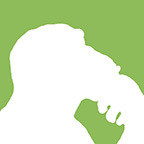
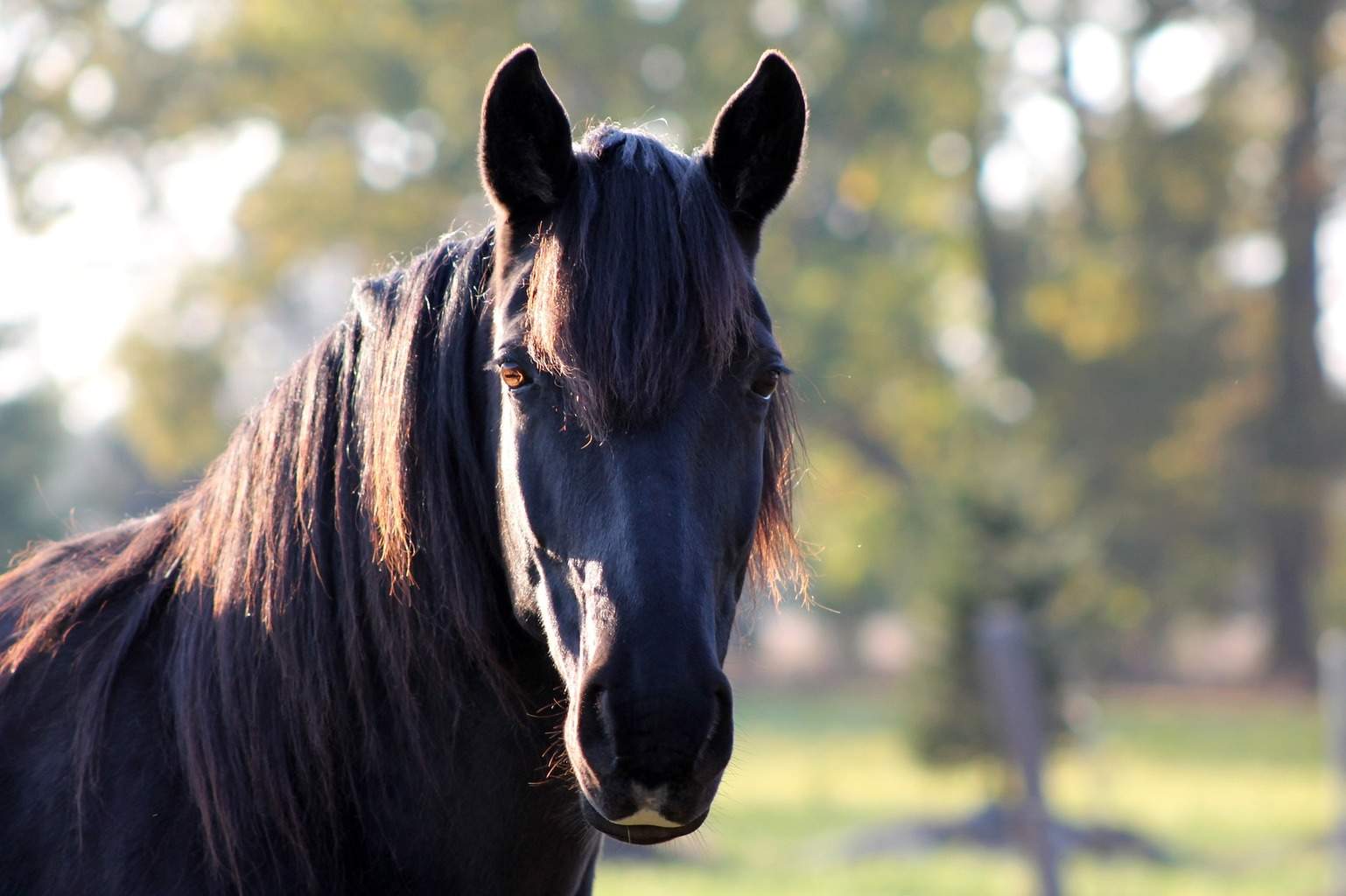

It’s good to see the world of science is finally catching up with what some horse people already know. A interesting read nevertheless
Thank you and good luck with your work it can only help turn the tide on how people still class a horse as just a horse, instead of an empathic, intelligent being.
Sue blackman